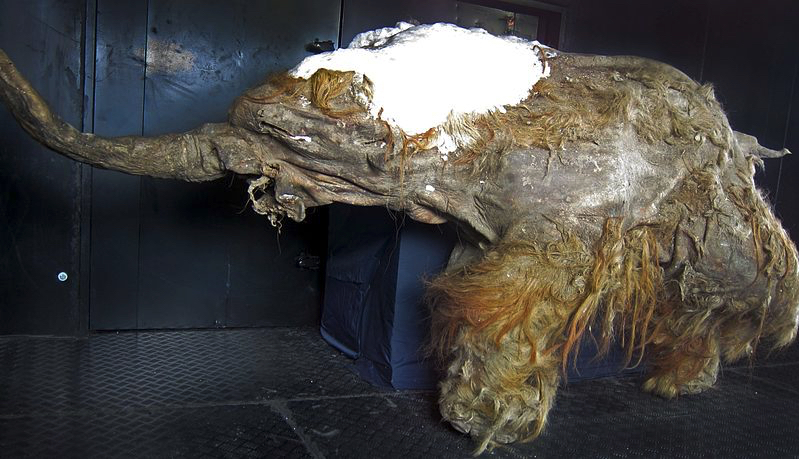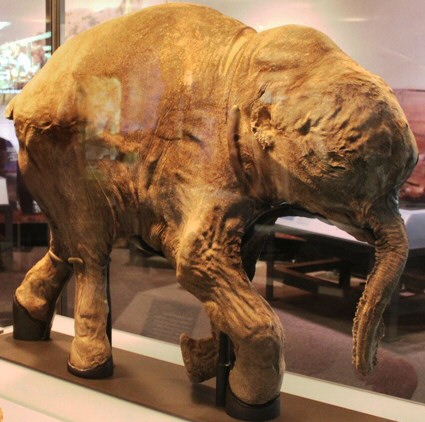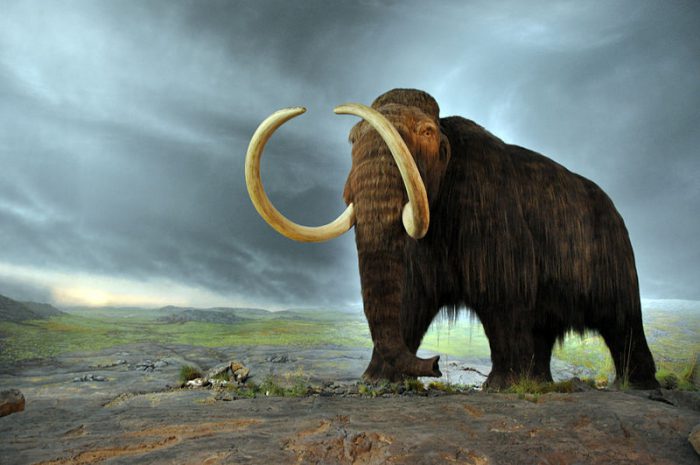Other than the saber-toothed cat, there is no prehistoric mammal as well known as the woolly mammoth. It's easy to see why.
So it's basically an elephant—which is already awesome—only with bigger tusks and covered in cuddly fur? Wish we could meet one in real life!
Sadly, meeting a live woolly mammoth is currently impossible. These animals have been extinct for at least 4,000 years. But a team of Japanese scientists have taken an intriguing step in the right direction.
They have brought mammoth cells "back to life".
Frozen and intact

The cells were taken from this 28,000-year-old mammoth mummy, named Yuka. (Wikimedia Commons/Cyclonaut)
What does "back to life" mean exactly? Where did they get these cells in the first place?
Because mammoths were animals that lived in the Arctic tundra (a cold treeless habitat), they had a higher chance of being preserved in either the region's year-round ice or frozen ground, known as permafrost. This is essentially like nature's equivalent of the freezer in your family's kitchen. The low temperatures stop the normal process of decay after an animal dies, creating a sort of mummy.
One such case is Yuka, a 28,000 year-old young female wooly mammoth. Yuka's soft tissue—things like skin, fur, organs, and muscles—are remarkably well-preserved. Though the animal is dead, some cells still exist within this soft tissue. What if those cells could be woken up?
Mammoth meets mouse
That was the challenge that scientists at Kindai University in Japan accepted—to reanimate the cells of this long-extinct creature. To do this, they used a process known as nuclear transfer. They extracted 88 cell nuclei—or cores of the cells—and implanted them inside oocytes of mice. An oocyte is an immature ovarian cell—think of it as a cell that will one day develop into an egg.
Can you start to see what the scientists were trying here? They took the cells of this extinct animal, and planted them inside eggs of another mammal species. The hope? That the dead mammoth cells would react to this, wake up, and begin to grow, or divide, into brand new cells. The result?
The cells did awaken and begin some of this process. But they did not divide into new daughter cells.
Where does this leave us?

Lyuba is another exceptionally well-preserved baby mammoth. Could she help provide DNA? (Wikimedia Commons)
Sadly short of the goal. Current nuclear transfer technology is not advanced enough to bring the woolly mammoth back to life. Even a specimen as fine as Yuka lacks complete DNA, the recipe required to create a living thing. Will the technology one day improve enough to save Yuka? Or is there an even better preserved mammoth awaiting discovery?
Do you think that we'll live to see living mammoths again?
 Despite being closer than ever, scientists are still not close to bringing this amazing beast back to life. (Wikimedia Commons)
Despite being closer than ever, scientists are still not close to bringing this amazing beast back to life. (Wikimedia Commons)










Will we see mammoths again or not? I think modern technology can do the trick and I look forward to seeing them for the first time in my life and I bet my family will too! And what did mammoths eat when they were still on earth also how big were baby mammoths!
I hate it.JK!